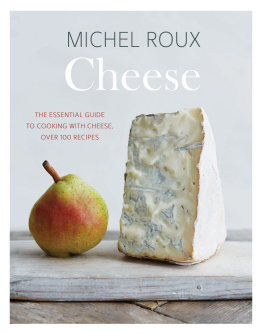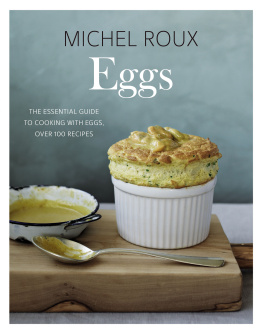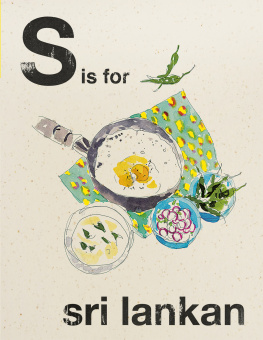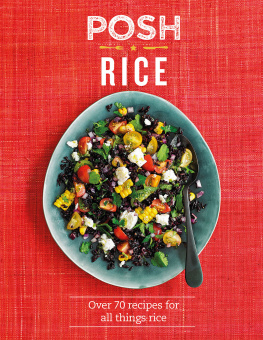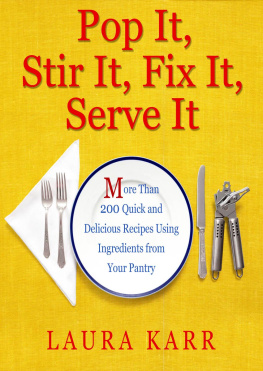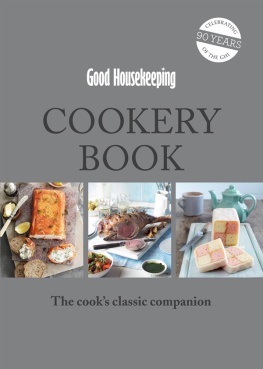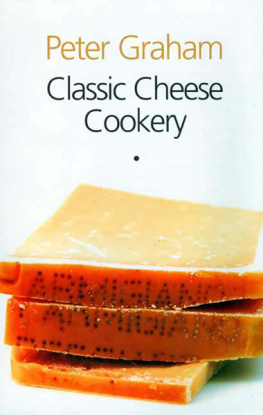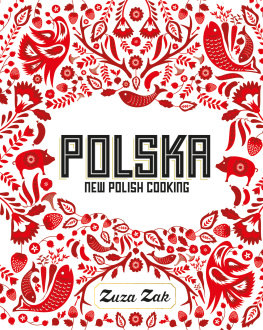Contents
Notes
All spoon measures are level unless otherwise stated: 1 tsp = 5ml spoon; 1 tbsp = 15ml spoon.
Use fresh herbs, sea salt and freshly ground black pepper unless otherwise suggested.
If using the zest of citrus fruit, buy organic, unwaxed fruit.
Timings are for conventional ovens. If using a fan-assisted oven, lower the temperature by 15C. Use an oven thermometer to check the temperature.
The numerous journeys I made through France while I was writing my last book, The Essence of French Cooking, rekindled many childhood memories for me, including, among others, my discovery and love of cheese so much so, in fact, that I decided to devote my next book to the subject.
From the age of seven, my mother entrusted me with the task of buying a few items from the local market of St Mand every Thursday. I would set off around midday to arrive when the stallholders were reducing their prices, preferring to sell their wares for less rather than having to pack everything up again. After buying fruit and vegetables, and some meat or fish, I was drawn like a magnet towards the cheese stall. The pleasure for me, as a kid, was an awakening of all my senses: smell, sight, touch and taste.
Every market day was invariably a voyage of discovery for me, because new cheeses appeared on the stall in different shapes, sizes and colours with the changing season, only to disappear again after a few months I used to think that they wanted to play hide-and-seek with me. The woman on the stall would always spoil me. I think she loved seeing my face light up in front of the display of cheeses, my eyes devouring them all. She would give me little morsels to try, especially the fresh cheeses or any that were relatively mild on the palate while still being flavourful. Through her gentle handling, she succeeded in developing my palate.
Our finances didnt allow us to spend a fortune on cheese, and my mothers instructions were strict: I must use the few precious coins deep in my pocket to get maximum value for money. I would often pick Cantal, a cheese known at the time as poor mans cheese, since it was the least expensive, yet nourishing, or a piece of Gruyre that, according to my mother, was vital for bone growth. Sometimes Id choose a Camembert or half a Coulommiers, first checking it was perfectly ripe to the centre by pressing it with my thumb. A piece of Roquefort, the king of cheeses, was a real treat. It was expensive, so I would buy just a tiny piece around 50g to spread over a whole baguette to pass around the table and share on a Sunday.
So there you have it, that is how I discovered my love of cheese. Since then, of course, I have come across hundreds of types of cheese on my extensive travels around the world. And at our restaurant the Waterside Inn, we offer our clients a choice of between 30 and 40 cheeses every day.
Cheese-making
It is thought that the first cheeses were made accidentally, thousands of years ago, as a consequence of herdsman carrying milk in leather bottles. Rennet, an enzyme found in a calfs stomach, curdled the milk in the bottle, creating the earliest cheese. Over the centuries the process has, of course, been much refined, but it is still based on a simple technique, involving four basic ingredients: milk, a starter culture, rennet (or other curdling agent) and salt.
Cows milk is most commonly used, but cheese-makers also produce cheeses from goats, sheeps and buffalo milk. Of the dozen or so dairy cattle breeds, the Holstein-Friesian is the most widespread. Dairy cows produce around 25 litres of milk a day each, and Germany is the biggest producer of cows milk in Europe.
France is the largest producer and consumer of goats cheese in Europe. Of the goat milking breeds, the Saanen is the best known. One goat produces between 2 and 5 litres a day, depending on the actual breed and its environs.
Sheeps or ewes milk is naturally homogenised and richer in fat and protein than cows milk, making it ideal for cheese-making. One ewe produces around 1 litre of milk per day. The Lacaune breed is the most popular in France, which produces a wide variety of ewes cheeses, including the famous Roquefort. Greece, Italy and Spain also produce excellent cheeses from sheeps milk.
Buffalo milk, from water buffalo, is primarily used to produce mozzarella. Italy is the main producer, of course, but good mozzarella is also produced in other countries around the world.
Whichever type of milk is used, the cheese-making process is similar. Firstly, a bacterial culture is added to the milk to acidify it. The bacteria turn the lactose in the milk to lactic acid, effectively souring it. Rennet or a non-animal curdling agent is then added to coagulate the milk, turning it into curds (the solid part) and whey (the liquid). The curds, which will become the cheese, are left to set and separate from the whey. This first stage forms the basis of the cheese.
The exact procedures during the subsequent stages determine the type or category of cheese. With the exception of most of the fresh cheeses (see right), the second stage involves concentrating the curd. Firstly, to release the whey, the curds are cut lightly for soft cheeses or finely for hard cheeses. After this, the curds are either cooked or piled on top of each other and pressed to exclude more whey. The curd is then milled and salt is added.
The third and final stage is the ripening process, during which the flavour and texture of the cheese develops. This is achieved by storing the cheese for a certain length of time in an area where the temperature and humidity are controlled. The type of cheese determines the precise conditions and length of storage, which account for its individual characteristics.
Cheese categories
Broadly, all cheeses belong to one of the following categories, according to the way they are produced:
Fresh cheeses These moist, young cheeses are ready to eat plain, just as they are, a few hours after being made. The curds are not cut, pressed or ripened (except for feta), so they represent the first stage of a cheese. Gently flavoured and low in fat, these milky cheeses are very mild and creamy, with just a hint of acidity. Ricotta, mozzarella and feta fall into this category, and there are many fresh goats cheeses.
Soft cheeses with a natural rind Often made in small log or pyramid shapes, these cheeses have a relatively fine rind covered in a light whitish to grey mould. They are mainly made from goats or sheeps milk and tend to have a creamy texture and mild flavour. In fact, they are fresh cheeses that are left to age and dry out, often in temperature- and humidity-controlled caves, reaching maturity after 10 to 30 days. Fine examples include Sainte-Maure de Touraine, Crottin de Chavignol and Valenay.
Soft cheeses with a bloomy rind

